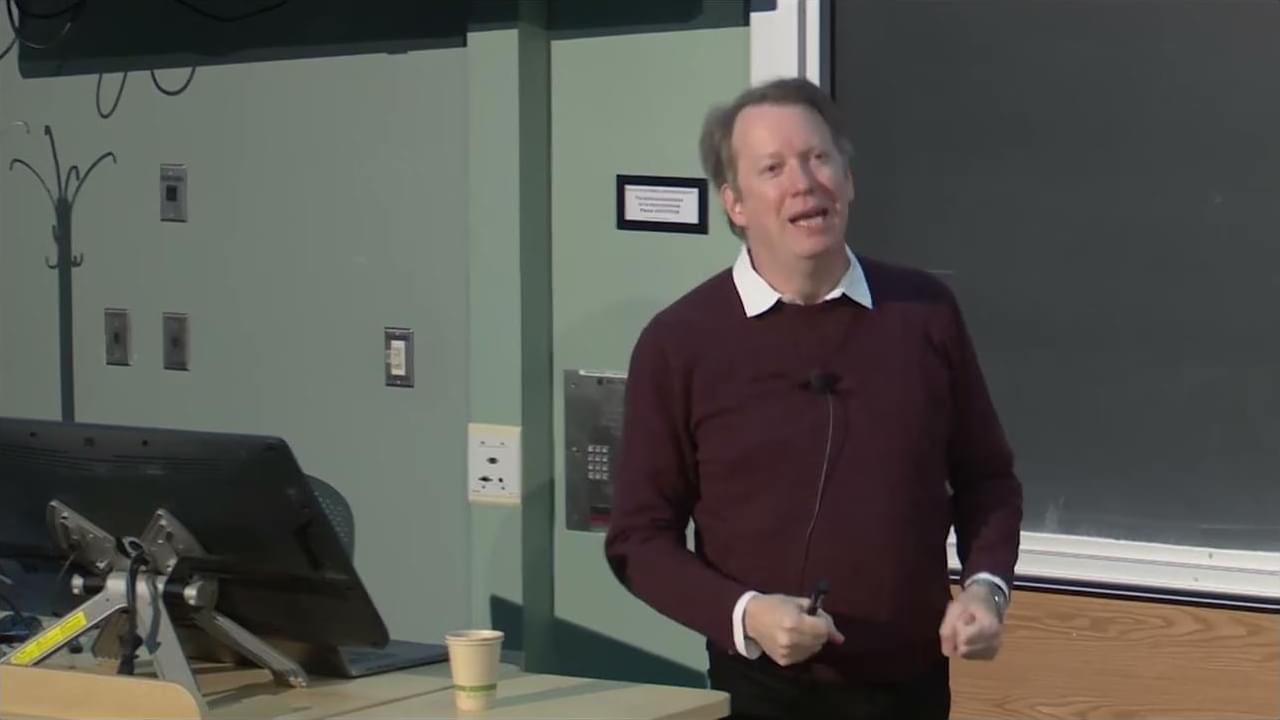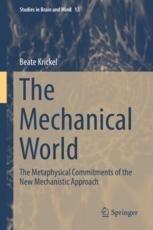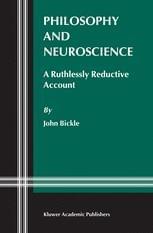This book describes the philosophical implications of artificial general intelligence, cognitive enhancements and the smart environment on the human mind.
Page 60
This monograph examines the metaphysical commitments of the new mechanistic philosophy, a way of thinking that has returned to center stage. It challenges a variant of reductionism with regard to higher-level phenomena, which has crystallized as a default position among these so-called New Mechanists. Furthermore, it opposes those philosophers who reject the possibility of interlevel causation.
Contemporary philosophers believe that the explanation of scientific phenomena requires the discovery of relevant mechanisms. As a result, new mechanists are, in the main, concerned solely with epistemological questions. But, the author argues, their most central claims rely on metaphysical assumptions. Thus, they must also take into account metaphysics, a system of thought concerned with explaining the fundamental nature of being and the world around it. This branch of philosophy does indeed matter to the empirical sciences.
The chapters investigate the nature of mechanisms, their components, and the ways in which they can bring about different phenomena. In addition, the author develops a novel account of causation in terms of activities.
From the reviews:
“If you thought reductionism about the mind was dead, think again: you may find John Bickle’s vigorously and powerfully argued Philosophy and Neuroscience: A Ruthlessly Reductive Account a real eye-opener. His guiding idea is that the proof of reductionism is in the track record of reductionist research strategies in neuroscience, in explaining mentality and behavior — and even qualitative consciousness itself. And Bickle does not disappoint: he serves up a veritable feast of reductionist success stories, from deep down in cellular and molecular neuroscience. Some of the details he describes will amaze, and perhaps also delight, you. Bickle’s discussion is invigorating as well as philosophically sophisticated, and his knowledge of current research in neuroscience is impressive indeed. The writing is clear, brisk, and refreshingly straightforward, and the book brims with enthusiasm and optimism. This is the latest salvo from the reductionist side, and a mighty one it is! It may not win the battle outright for reductionism, but it is going to change the shape and terms of the debate to come. A must read for those interested in the issues of psychoneural reduction and reductionism, and highly recommended to anyone with a broad interest in the philosophy of mind and psychology.” (Jaegwon Kim, Brown University)
“Bickle now practices metascience … a large part of the book consists of neuroscientific case studies. … Bickle’s experimental cases are fascinating and his book qualifies as a showcase of naturalism in the philosophy of mind. As such it deserves to be read by any philosopher with naturalistic leanings. … Bickle has provided food for thought. … It manifests a profound respect for empirical developments, and a healthy criticism of philosophical hobbyhorses and entrenched reasoning patterns. This makes the book worthwhile reading.” (Huib Looren de Jong and Maurice K. D. Schouten, PhilosophicalPsychology, Vol. 18 , 2005)
This book dissolves the most vicious problem of scientific realism (i.e., the problem of scientific representation). It Combines the philosophical and scientific resources of Structural Realism along with Ronald Giere and friend’s Cognitive Models of Science approach.
Oct 23, 2024
New Assessment Reveals Plants Absorb 31% More CO2 Than Previously Estimated
Posted by Laurence Tognetti, Labroots Inc. in categories: climatology, sustainability
How much carbon dioxide (CO2) do plants absorb from the atmosphere? This is what a recent study published in Nature hopes to address as a team of researchers investigated what’s known as the Terrestrial Gross Primary Product (GPP), which measures the amount of CO2 that photosynthesis removes from the atmosphere. This study holds the potential to help researchers, climate scientists, legislators, and the public better understand the role that plants play in reducing carbon emissions, along with mitigating the effects of climate change worldwide.
“Figuring out how much CO2 plants fix each year is a conundrum that scientists have been working on for a while,” said Dr. Lianhong Gu, who is a distinguished research scientist at the Oak Ridge National Laboratory (ORNL) and a co-author on the study. “The original estimate of 120 petagrams per year was established in the 1980s, and it stuck as we tried to figure out a new approach. It’s important that we get a good handle on global GPP since that initial land carbon uptake affects the rest of our representations of Earth’s carbon cycle.”
Petagrams are the standard measurement used for GPP, with one petagram equaling 1 billion metric tons, and the latter being the amount of CO2 discharged from the total number of gas-powered passenger vehicles in the world, which is approximately 1.4 billion.
Oct 23, 2024
Lost in the Noise: Social Media’s Challenge During Natural Disasters
Posted by Laurence Tognetti, Labroots Inc. in categories: climatology, government
How does social media influence safety messages during a natural disaster? This is what a recent study published in the International Journal of Disaster Risk Reduction hopes to address as a pair of researchers from the Stevens Institute of Technology investigated how the perspectives of natural disasters and the corresponding government responses could be impacted by false or irrelevant information being shared across a myriad of social media platforms, specifically X (Twitter) and Facebook. This study holds the potential to help scientists, governments, disaster relief efforts, and the public better understand the ramifications of social media messages and discussions on responding to natural disasters worldwide.
“It’s like being at a crowded party—if everyone’s arguing loudly about politics, it’s hard to make yourself heard over the noise,” said Dr. Jose Ramirez-Marquez, who is an associate professor in the Stevens School of Systems and Enterprises and the sole co-author on the study.
For the study, the researchers examined online discussions that occurred during four recent hurricanes: Harvey, Imelda, Laura, and Florence. The goal of the study was to ascertain online discussion patterns, and which posts and comments got the most attention as the crises unfolded. For example, the researchers found that dogs being trapped by flooding comprised 24 of the 50 most active discussions compared to 7 of those 50 being comprised of public safety. During Hurricane Florence, it was found that more than half of the 50 top discussions involved politics or animals, whereas 19 of the 50 discussed public safety.
Oct 23, 2024
Fungal ‘Brains’ Can Think Like Human Minds, Scientists Say
Posted by Jose Ruben Rodriguez Fuentes in category: neuroscience
Oct 23, 2024
Saturday Morning Physics | The Many Worlds of Quantum Mechanics — Sean Carroll
Posted by Dan Breeden in category: quantum physics

Saturday Morning Physics “The Many Worlds of Quantum Mechanics” Sean CarrollOctober 21, 2023Weiser Hall.
Oct 23, 2024
The Exploding Alien and When The Plants Stop Making Oxygen
Posted by Dan Breeden in category: futurism

An exploration of alternative biochemistries, especially that of fluorine, and how the luminosities of stars may play into different forms of life.
My Patreon Page:
Continue reading “The Exploding Alien and When The Plants Stop Making Oxygen” »
















